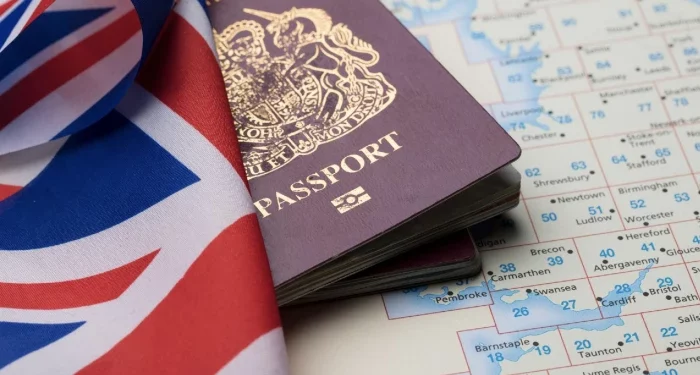Australia and Papua New Guinea (PNG) have a long – standing relationship, and many Papua New Guineans are interested in traveling to Australia for various reasons. Whether it’s for tourism, study, work, or to join family members, obtaining an Australian visa is the first crucial step. The process of applying for an Australian visa from PNG involves several steps, and understanding each of these steps is essential for a successful application.
Types of Australian Visas Available to Papua New Guineans
Visitor Visas
Tourist Visa (Subclass 600)
The Tourist Visa (Subclass 600) is a popular choice for Papua New Guineans who want to visit Australia for a short – term holiday. This visa allows you to stay in Australia for up to three, six, or twelve months, depending on the conditions attached to your visa. To be eligible for this visa, you need to show that you have enough money to cover your expenses during your stay in Australia. This could mean providing bank statements that show a sufficient balance. For example, if you plan to go on a three – month trip, you should have enough funds to pay for accommodation, food, and any activities you might engage in.
You also need to prove that you have strong ties to Papua New Guinea. This can include having a job in PNG, owning property there, or having family members who depend on you. If you have a stable job in PNG with a good salary, it shows that you have a reason to return to PNG after your visit to Australia.
Business Visitor Visa (Subclass 600 – Business Visitor Stream)
For those involved in business activities, the Business Visitor Visa (Subclass 600 – Business Visitor Stream) is an option. This visa enables you to visit Australia for business – related purposes like attending meetings, conferences, or exploring business opportunities. You will need to provide evidence of your business in PNG, such as business registration documents, and details about your business activities in Australia. If you’re a PNG – based entrepreneur planning to attend a trade show in Australia, you should submit an invitation letter from the trade show organizers, along with your company’s financial statements and a business plan for your visit.
Student Visas
Student Visa (Subclass 500)
If you’re a Papua New Guinean student aiming to study in Australia, you’ll need to apply for a Student Visa (Subclass 500). First and foremost, you must receive an offer of a place in an Australian educational institution. This could be a university, college, or vocational training center. Once you have the offer, you need to prove that you can afford to pay for your tuition fees, living expenses, and health insurance. You may need to show bank statements with enough funds, or evidence of a scholarship or sponsorship. For instance, if you’re enrolling in a four – year degree program in Australia, you should have enough money saved or secured through a scholarship to cover the tuition fees for all four years, as well as your living costs like accommodation and food.
You also need to meet health and character requirements. This may involve undergoing a medical examination, which can include tests for certain diseases like tuberculosis. You must not have a serious criminal record. If you’ve had any criminal convictions in PNG, you may need to provide additional information to prove that you’re still suitable to study in Australia.
Work Visas
Temporary Skill Shortage (TSS) Visa (Subclass 482)
The Temporary Skill Shortage (TSS) Visa (Subclass 482) is for Papua New Guineans with skills in occupations that are in demand in Australia. To be eligible, you need to have a job offer from an approved Australian employer. The employer must first obtain sponsorship approval from the Australian government. You need to demonstrate that you have the relevant skills and qualifications for the job. For example, if you’re a construction worker in PNG and have a job offer from an Australian construction company, you’ll need to provide your educational certificates related to construction, work experience certificates from your previous jobs in the field, and evidence of your English language proficiency (usually through tests like IELTS or PTE).
There are different streams within the TSS visa, and the requirements vary depending on the stream. The Short – term stream is for occupations on the Short – term Skilled Occupation List, and the Medium – term stream is for occupations on the Medium – and Long – term Strategic Skills List.
Working Holiday Visa (Subclass 417)
The Working Holiday Visa (Subclass 417) is available to Papua New Guineans between the ages of 18 and 30 (in some cases, up to 35). This visa allows you to work and travel in Australia for up to 12 months. To apply, you need to meet certain criteria, such as having a valid PNG passport, being of the eligible age, and having at least AUD 5000 in available funds. You also need to have a basic level of English language proficiency. This visa is a great opportunity for young Papua New Guineans to experience life in Australia, gain work experience in different industries, and travel around the country.
Family – Sponsored Visas
Partner Visa (Subclass 309/100)
If you have an Australian partner (either a spouse or a de – facto partner), you may be eligible for a Partner Visa (Subclass 309/100). The Subclass 309 is a temporary visa, and the Subclass 100 is a permanent visa. To apply, you need to prove the authenticity of your relationship. This can include providing evidence of living together, joint financial arrangements, and shared social activities. For example, if you and your Australian partner have a joint bank account, rent a house together, and have photos of your shared holidays, these can be used as evidence.
You also need to meet health and character requirements. Similar to other visa types, you may need to undergo a medical examination and not have a serious criminal record.
Parent Visa (Subclass 103/804)
For Papua New Guinean parents who want to join their Australian – citizen or permanent – resident children, the Parent Visa (Subclass 103/804) is an option. The Subclass 103 is a non – contributory parent visa, and the Subclass 804 is for parents living in Australia on a long – term basis. To be eligible, your child in Australia usually needs to meet certain income requirements. You also need to provide evidence of the parent – child relationship, such as birth certificates, and meet health and character requirements.
How to Apply for an Australian Visa from Papua New Guinea
Step 1: Determine Your Eligibility
Before starting the application process, carefully review the requirements for the visa type you’re interested in. Check the age limits, skill requirements, financial requirements, and any other specific criteria. For example, if you’re considering the Working Holiday Visa, make sure you’re within the eligible age range and have the required amount of funds.
You can use the official Australian government immigration website to access detailed information about each visa type and its eligibility requirements.
Step 2: Gather the Required Documents
Once you’ve determined your eligibility, start gathering the necessary documents. This may include your passport, educational certificates, work experience certificates, bank statements, and any other supporting documents. Make sure all documents are in the correct format. If they are not in English, you may need to provide certified translations. For example, if your educational certificates from a PNG institution are in Tok Pisin, you need to have them translated into English by an approved translator.
For some visas, like the Student Visa, you may also need to provide a letter of acceptance from an Australian educational institution, and for work visas, a job offer letter from an Australian employer. For family – sponsored visas, you need to provide evidence of the family relationship.
Step 3: Apply Online
Most Australian visa applications are submitted online through the ImmiAccount system. Create an ImmiAccount if you don’t already have one. Fill out the online application form carefully, providing accurate information. Upload all the required documents as per the instructions.
Pay the visa application fee, which varies depending on the type of visa. Make sure to keep a record of your payment receipt and the application reference number.
Step 4: Wait for Processing
After submitting your application, you need to wait for it to be processed. The processing time can vary significantly depending on the type of visa, the complexity of your application, and the volume of applications being processed by the Australian immigration authorities. For example, a simple Visitor Visa may be processed within a few weeks, while a Family – Sponsored Permanent Visa can take several months or even longer.
You can track the progress of your application through your ImmiAccount. During this time, the immigration authorities may contact you if they need any additional information or documentation.
Step 5: Decision and Next Steps
Once a decision is made on your application, you’ll be notified through your ImmiAccount. If your visa is approved, you’ll receive a notice of grant, which will include details about the conditions of your visa. Make sure to read and understand these conditions.
If your visa is refused, you may have the option to appeal the decision, depending on the circumstances. You should seek legal advice if you’re considering an appeal.
Conclusion
Applying for an Australian visa from Papua New Guinea is a process that requires careful planning and attention to detail. By understanding the different types of visas available, determining your eligibility, gathering the right documents, and following the application process correctly, you can increase your chances of a successful visa application. Whether you’re planning a short – term visit, a long – term study, or a permanent move to Australia, the Australian visa system offers options for Papua New Guineans. It’s important to stay updated on any changes in visa requirements and policies, as these can impact your application. With the right preparation and knowledge, you can take the first step towards your Australian experience.
Related topics:



















